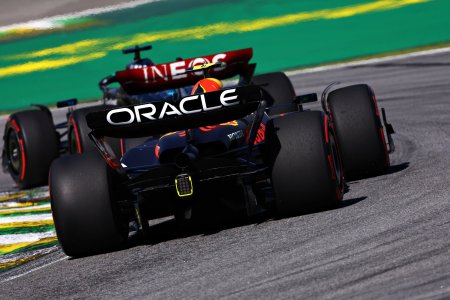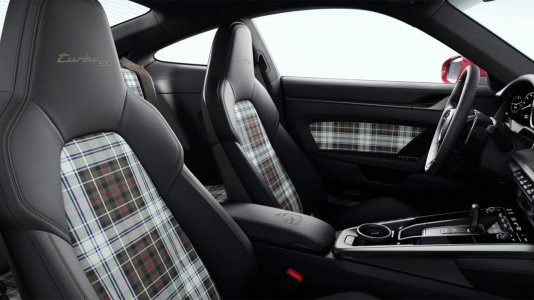You are using an out of date browser. It may not display this or other websites correctly.
You should upgrade or use an alternative browser.
You should upgrade or use an alternative browser.
Things With Wheels That Are Cool
- Thread starter AndrewBo
- Start date
1960 Plymouth XNR
This wedge-shaped 1960 show car, named after Chrysler design chief Virgil Exner, was one of the striking 'idea cars' of this era. It featured a grille frame that doubled as its front bumpers and had an asymmetrical design in which a hood air scoop began above the grille and tapered back to become the housing of the instrument cluster; then the driver's padded headrest flowed to the rear as a single fin.
Other features included a leather-covered glove box that doubled as a camera case, and a passenger seat set lower than that driver's seta, equipped wîth a separate removable panel. In closed course tests, its 200 hp six-cylinder engine pushed the car to over 140 mph.
This concept car was built in 1959 by Ghia and was presented in 1960. The red XNR, designed by Virgil M. Exner, was powered by a 170 Slant-Six engine prepared to NASCAR specs, which pumped out 250 horsepower. On Chrysler's testing track, the car had a top speed of 150 mph.
Though XNR rode the Plymouth Valiant's tiny 106-inch wheelbase, prominent overhangs stretched its overall length to 195 inches. Height was just 43 inches to the top of the fin.
The frame of the XNR's grille was constructed of heavy-duty materials and doubled as the car's front bumper. The 'X-motif' rear bumper was a visual reminder of the car's name and essentially asymmetric nature.
The driver sits behind a dramatically curved 'personal' windshield; a smaller, fold-down windscreen was available for the protection of a passenger. Additionally, the passenger sat somewhat lower than the driver - a design thought to minimize the negative effects of the wind.
Chrysler decided there was just no market; even if there had been, the styling would likely have seemed just too far out to sell well. Finally, Exner's abrupt firing in 1962 killed any chance the design might have had for being refined into something more practical for production.
Elemment Palazzo

The world's most expensive mobile home has gone on sale in Dubai for £2 million, or $3.1 million at today's conversion rates.
The humongous, 40-foot-long eleMMent Palazzo by the Austrian company Marchi Mobile is covered with gold and comes with a ton of luxury features, including a 40-inch flat screen, a pop-up cocktail lounge, a fireplace, a master bedroom, and underfloor heating.
The moving mansion can even clean itself.
"... the vehicle has been a hit among oil-rich Arab Sheikhs - the state-of-the-art homes even wash themselves after a day's driving through the Middle Eastern desert," the Daily Mail reports.
But the amazing vehicle could also cater to any multi-millionaire or global superstar on the road. It's also available in white.








The world's most expensive mobile home has gone on sale in Dubai for £2 million, or $3.1 million at today's conversion rates.
The humongous, 40-foot-long eleMMent Palazzo by the Austrian company Marchi Mobile is covered with gold and comes with a ton of luxury features, including a 40-inch flat screen, a pop-up cocktail lounge, a fireplace, a master bedroom, and underfloor heating.
The moving mansion can even clean itself.
"... the vehicle has been a hit among oil-rich Arab Sheikhs - the state-of-the-art homes even wash themselves after a day's driving through the Middle Eastern desert," the Daily Mail reports.
But the amazing vehicle could also cater to any multi-millionaire or global superstar on the road. It's also available in white.
Last edited:
The Batmobile is a wheeled, self-powered, armoured fighting motor vehicle, frequently used by the DC Comics superhero Batman for vehicular hot pursuit, transportation, anti-tank warfare and riot control. Kept in the Batcave, which it accesses through a hidden entrance, the heavily armoured, gadget-laden vehicle is used by Batman in his crime-fighting activities.
The Batmobile made its first appearance in Detective Comics #27 (May, 1939). Then a red sedan, it was simply referred to as "his car". Soon it began featuring an increasingly prominent bat motif, typically including distinctive wing-shaped tailfins. Armored in the early stages of Batman's career, it has been customized over time into a sleek street machine, and is the most technologically advanced crime-fighting asset within Batman's arsenal. Depictions of the vehicle has evolved along with the character, with each incarnation reflecting evolving car technologies.[1] Some depictions present the Batmobile as able to be unmanned or remotely operated. It has appeared in every Batman iteration—from comic books and television to films and video games—and has since gone on to be a part of pop culture.
SakL
Black flagged in a club race!

Would you like to go wherever the hell you want? Using its self-inflated tires, Russia’s SHERP ATV can give you that pleasure. It will climb over obstacles as tall as 27.5 inches, swim with ease, turn like a tank and look awesome in any situation for only $49,000 worth of Rubles.
The SHERP is Alexei Garagashyan’s brilliant invention. It weighs just 2,866 pounds dry, so while it might only have a 44.3 horsepower 1.5 liter Kubota V1505 four-cylinder diesel linked to a five-speed manual, it will still do 28 mph on land, or 3.7 mph in water, depending on the wind. It will also crawl at up to 9.3 mph in first gear.
With its giant custom tires and the skid-steer, it can also turn in its own length, which is 11 feet. And as long as the trees ahead are at least 8.2 feet apart, this crazy two seater will find a way through them.
@Ted Duncan Jr
Wow. Thank's man. Really nice " Things with wheels that are cool"

PS:
I've started this thread Oct 7, 2013 .....
Wow. Thank's man. Really nice " Things with wheels that are cool"
PS:
I've started this thread Oct 7, 2013 .....
this I want!


Alfa-Romeo F1 177-001 "Test Car"




More about this Formula 1
https://www.velocetoday.com/alfa-romeo-177-001-all-italian-alfa-f1/
More about Robert Choulet who has been involved in the particular aerodynamics of this car and some other famous ones ! ;-)
https://en.wikipedia.org/wiki/Robert_Choulet
Cheers ! ;-)




More about this Formula 1
https://www.velocetoday.com/alfa-romeo-177-001-all-italian-alfa-f1/
More about Robert Choulet who has been involved in the particular aerodynamics of this car and some other famous ones ! ;-)
https://en.wikipedia.org/wiki/Robert_Choulet
Cheers ! ;-)
Latest News
-
2024 Formula One Las Vegas Grand PrixIt is crunch time for Formula One, with the sport coming into its third-to-last event in Las...
- Connor Minniss
- Updated:
- 4 min read
-
RaceRoom's 1990s Throwback Continues With 5 Super Touring CarsRaceRoom continues its path to becoming touring car fan's sim racing heaven: Five new Super...
- Yannik Haustein
- Updated:
- 5 min read
-
Pimax Crystal Super: New Flagship VR Headset With Enormous Resolution UnveiledThe high-end VR market has a new competitor: The Pimax Crystal Super is the new flagship of the...
- Yannik Haustein
- Updated:
- 3 min read
-
Fanatec Reveals 2024 Black Friday Deals - Win Fanatec Hardware In 7-Day OverTake Giveaway!At long last, Fanatec has released its 2024 Black Friday deals. If you are a Fanatec fan or...
- Connor Minniss
- Updated:
- 3 min read
-
RaceRoom Teases Super Touring Cars, Launches Free Access Period & Black Friday SaleRaceRoom continues what has been a busy year: Developer KW Studios has teased new content, and...
- Yannik Haustein
- Updated:
- 2 min read
-
Engine Notes Over Music: What Our Community Listens To When RacingSim racers are all different, and our poll on what they listen to when in the rig showed that...
- Luca Munro
- Updated:
- 3 min read
-
Porsche Hypercar, New Sophy AI Tracks Coming With Gran Turismo 7 Update 1.54After our attempts to make predictions for the cars releasing with Gran Turismo 7 version 1.54...
- Luca Munro
- Updated:
- 2 min read











